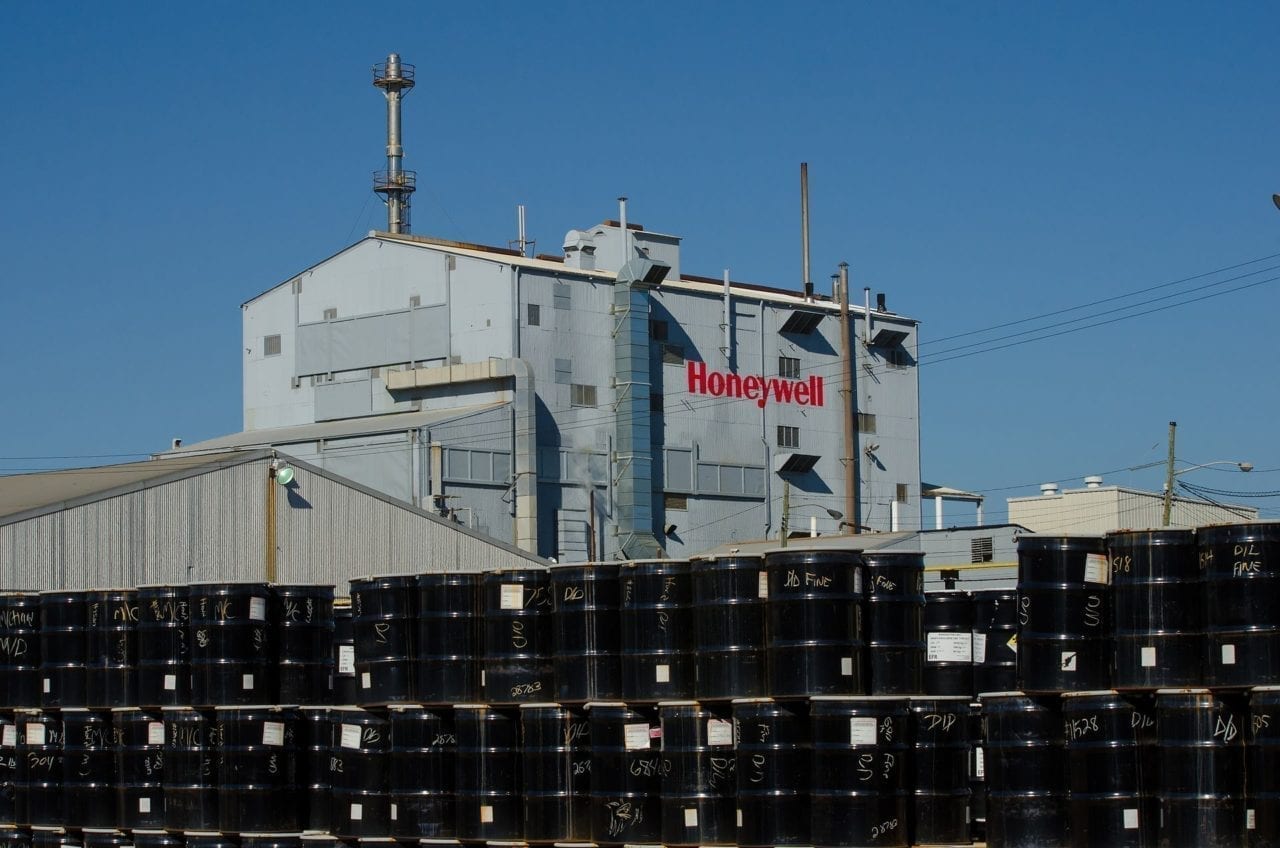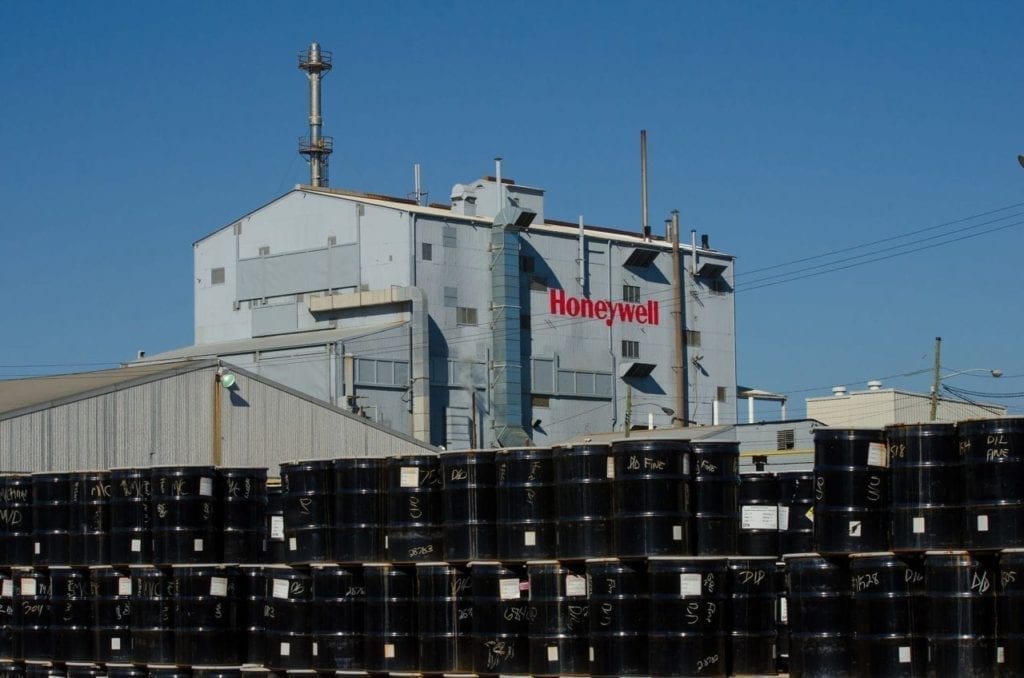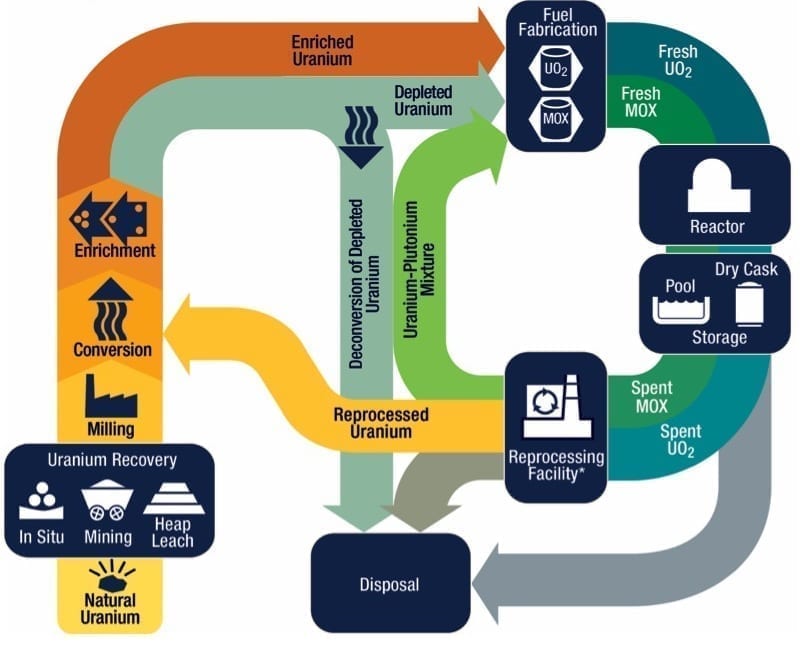Honeywell to Reopen Sole U.S. Uranium Conversion Plant
The post Honeywell to Reopen Sole U.S. Uranium Conversion Plant appeared first on POWER Magazine.

Honeywell is gearing up to reopen the Metropolis Works plant in Metropolis, Illinois-the U.S.'s sole uranium conversion facility-and restart production of uranium hexafluoride (UF6) by early 2023.
The Charlotte, North Carolina-based global technology giant told POWER in a statement on Feb. 9 it has communicated to employees and officials its intent to reopen the facility, which it idled in early 2018 owing to slack demand for UF6, a basic component of enriched nuclear fuel used in commercial nuclear power reactors.
As the only domestic uranium conversion facility, Honeywell's Metropolis Works facility has been an important national strategic asset, well-positioned to satisfy UF6 demand both in the U.S. and abroad," the company said on Tuesday.
To meet the 2023 UF6 production restart timeframe, Honeywell will hire 160 full-time employees as well as contractors by the end of next year, it said. We're proud to bring these jobs back to the Metropolis community to meet the needs of our customers."
 Metropolis Works began operation in 1958 under a contract with the U.S. Atomic Energy Commission. Following completion of the contract in 1964, UF6 production was suspended, but the plant continued to produce other products. The facility underwent rehabilitation in 1967 and operated as a private converter since 1968. It operates under a license from the U.S. Nuclear Regulatory Commission (NRC). In 2012-13, the site was upgraded to comply with post-Fukushima NRC standards to withstand tornadoes and earthquakes. Courtesy: Honeywell
Metropolis Works began operation in 1958 under a contract with the U.S. Atomic Energy Commission. Following completion of the contract in 1964, UF6 production was suspended, but the plant continued to produce other products. The facility underwent rehabilitation in 1967 and operated as a private converter since 1968. It operates under a license from the U.S. Nuclear Regulatory Commission (NRC). In 2012-13, the site was upgraded to comply with post-Fukushima NRC standards to withstand tornadoes and earthquakes. Courtesy: HoneywellHoneywell's decision is significant for the nation's domestic nuclear industry but not wholly unexpected. In March 2020, the Metropolis Works plant received the Nuclear Regulatory Commission's (NRC's) approval to run for 40 more years.
While it was built in 1958, the facility began converting uranium ore concentrates-known commonly as yellowcake"-to UF6 for commercial purposes in 1968. Honeywell obtains uranium oxide from mills and in-situ recovery facilities and converts it to the UF6, which is then transported to other facilities to be enriched and subsequently made into fuel for use in commercial nuclear power reactors.
Owing to nuclear phaseouts and idled plants in Japan and Germany in Fukushima's aftermath, Honeywell temporarily idled UF6 production at the Metropolis site in 2018 and slashed its full-time workforce by 170 positions, citing an oversupplied UF6 global market. It said then, however, that it would maintain minimal operations to support a future restart should business conditions improve."
Honeywell Fluorine Products Vice President and General Manager Sanjeev Rastogi last year told POWER that though the facility received the NRC's approval, a production restart wouldn't begin until market conditions improve to operate sustainably." In order to operate sustainably, the company had then said it needed to ensure it has ongoing robust demand, firm commitments from customers and sustainable prices before we restart." It added that since its shutdown, it has seen positive trends in the market and feedback from utilities that they will need our capacity."
On Tuesday, Honeywell said it has had ongoing conversations with our customers and evaluated the market. Because of customer demand and the depletion of secondary supplies of UF6 over the last three years, Metropolis Works is well-positioned as a vital facility to satisfying the demand for conversion both in the U.S. and abroad," it said.
As a crucial part of the domestic nuclear fuel cycle, the Metropolis Works plant, notably, was a focus in a landmark strategy released in April 2020 by the Trump administration's White House's Nuclear Fuel Working Group (NFWG). The three-pronged strategy sought to revive domestic nuclear fuel production along with the entire nuclear fuel supply chain.
 Nuclear fuel cycle. This infographic illustrates the stages in the nuclear fuel cycle, which include uranium recovery, conversion, enrichment, and fabrication, to produce fuel for nuclear reactors. Uranium is recovered or extracted from ore, converted, and enriched. Then, the enriched uranium is manufactured into pellets. These pellets are placed into fuel assemblies to power nuclear reactors. Note: Reprocessing of spent nuclear fuel, including mixed-oxide (MOX) fuel, is not practiced in the U.S. Source: NRC
Nuclear fuel cycle. This infographic illustrates the stages in the nuclear fuel cycle, which include uranium recovery, conversion, enrichment, and fabrication, to produce fuel for nuclear reactors. Uranium is recovered or extracted from ore, converted, and enriched. Then, the enriched uranium is manufactured into pellets. These pellets are placed into fuel assemblies to power nuclear reactors. Note: Reprocessing of spent nuclear fuel, including mixed-oxide (MOX) fuel, is not practiced in the U.S. Source: NRCAccording to the Energy Information Administration, in 2019, the nation produced 173,875 pounds of domestic uranium concentrate (U3O8)-the lowest annual production amount since before 1949. At the end of 2019, only four domestic in-situ recovery (ISR) plants were operating (all in Wyoming) and three domestic conventional uranium mills were on standby. As noted, Honeywell's Metropolis Works plant in Metropolis, Illinois, remains the nation's only domestic uranium conversion facility. Meanwhile, the last domestic uranium enrichment plant that could meet U.S. national security requirements was built in the 1950s and shut down in 2013.
The NFWG's strategy envisioned an expansion of the existing American Assured Fuel Supply (AAFS)-a reserve of low-enriched uranium to serve as a backup fuel supply for foreign recipients through domestic entities in the event of a fuel supply disruption-as well as a proposed Uranium Reserve. The U.S. Uranium Reserve, first announced in the Department of Energy's (DOE's) 2020 budget request, had been proposed to provide assurance of availability of uranium in the event of a market disruption and support strategic U.S. fuel cycle capabilities, and is not designed to replace or disrupt market mechanisms."
As significantly, the NFWG's strategy envisioned mined and milled uranium estimated between 17 million and 19 million pounds in the form of U3O8 (beginning in 2020); domestic conversion services resulting in about 6,000 tons to 7,500 tons of UF6, beginning no later than 2022; and domestic enrichment services beginning possibly in the 2023 timeframe, of which 25% would be unobligated."
-Sonal Patel is a POWER senior associate editor (@sonalcpatel, @POWERmagazine).
The post Honeywell to Reopen Sole U.S. Uranium Conversion Plant appeared first on POWER Magazine.